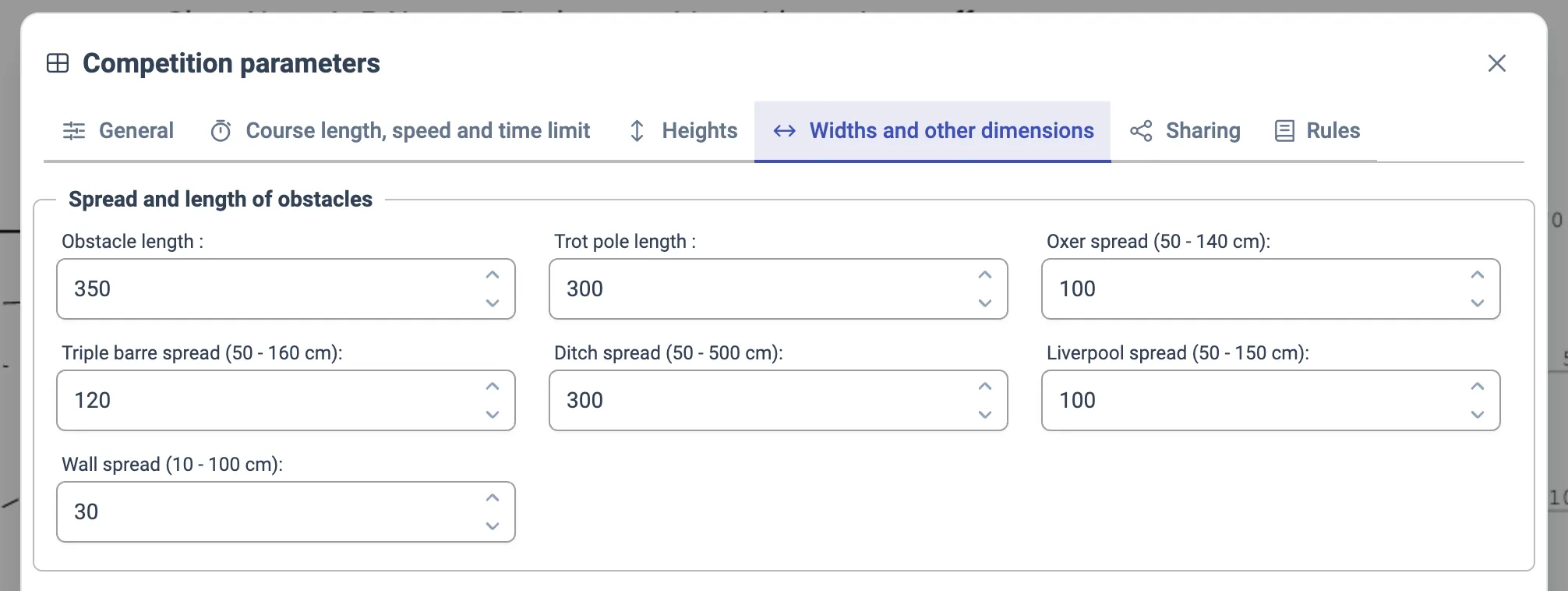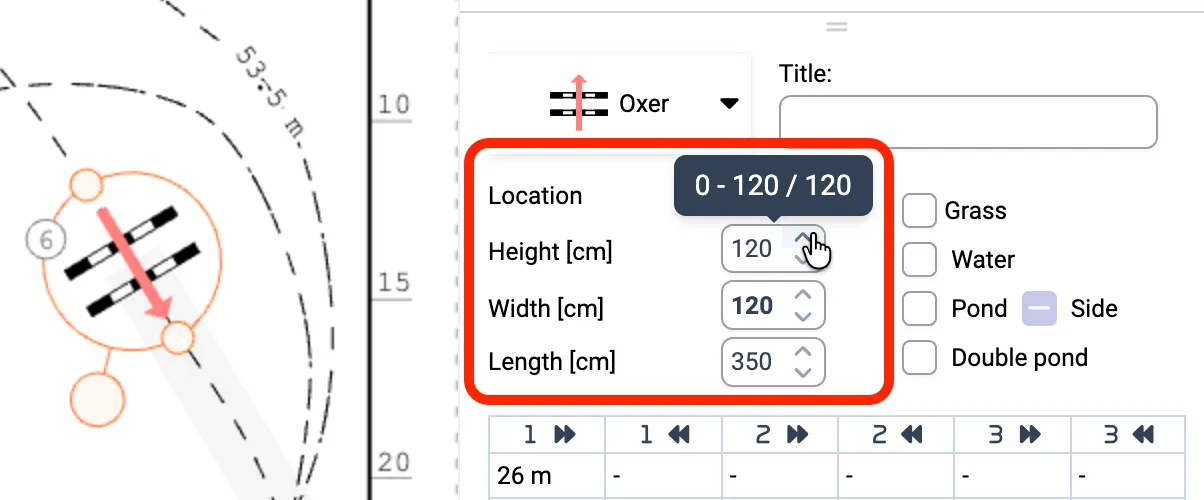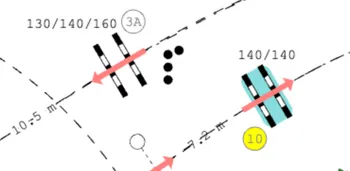Obstacle dimensions
Obstacle dimension types
For obstacles built with poles or bars, you can control three core dimensions:
- Length - distance between the ends of the poles.
- Height - distance from the ground to the highest point of the obstacle.
- Width (spread) - distance between the takeoff and landing sides along the jumping path. See the Distances guide for calculation details.
You can manage these values in two ways:
- Global - set shared defaults for the entire arena in Competition Parameters.
- Per obstacle - override a single obstacle in the Object panel.
Each dimension inherits its allowed range and default value from the rules of the active Competition Type (federation).
Global dimensions
Global heights
- Open Competition Parameters.
- Switch to the Heights tab.
- Pick a Competition Class and enter its global height.


The values instantly appear in the Competition Table.

Global lengths and widths
- Open Competition Parameters.
- Go to the Widths and other dimensions tab.
The Obstacle length field covers every obstacle type except training elements. Training trot poles and cavallettis have their own Trot pole length setting.
Set default spreads (widths) per obstacle type - oxer, triple barre, ditch, liverpool, and walls.

Individual dimensions
Select an obstacle and adjust its dimensions in the Object panel at the bottom-right of the screen. Changes apply only to the current obstacle.
Bold values flag a deviation from the global defaults. While bold, the dimension ignores later global updates. When the value matches the global default, it automatically tracks global changes again.
Hover over any input to see the allowed federation range and the global default.

Dimensions above the obstacles
You can turn on displaying dimensions above the obstacles in Display options.

The displayed dimensions are Height (low) / Height (high) / Spread. Heights low and high are shown in case the obstacle has raising height defined in obstacle materials. When obstacle is a vertical, only its Height is displayed.
